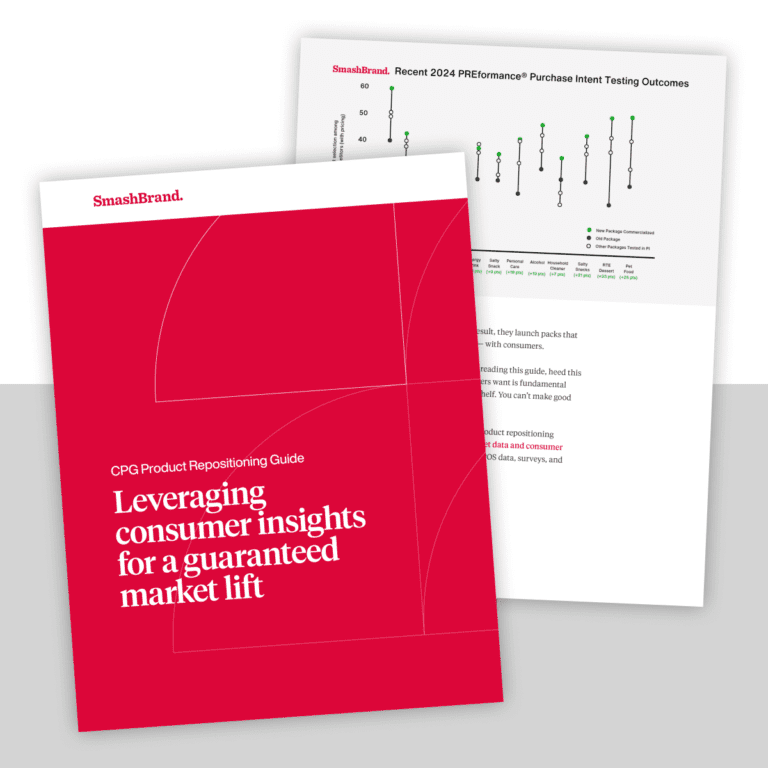Your brand vision is a set of objectives guiding the growth and direction of your company. It’s one of those terms like “mission statement” or “brand values” that marketers love to throw around, but what does it really mean? How does a company define its brand vision, and what are the benefits of doing so?
Let’s explore the concept in more detail.
What Is a Brand Vision? (With Examples)
We’ve all seen brand vision statements online or on consumer packaging, even if we’ve never written one ourselves.
- “To provide access to the world’s information in one click.” – Google
- “Video communications empowering people to accomplish more.” — Zoom
- “A world where everyone has a decent place to live.” – Habitat for Humanity
A brand vision is something inspirational; it’s something short, direct, and focused that gives viewers a clear understanding of what a company does. Or at least, what a company is striving to do. This isn’t to be confused with a mission statement – a similar concept that shares some overlap with brand visions.
The common distinction is that brand visions answer the “why” while mission statements address the “how.”
Commonly, mission statements will be short and specific and feature tangible goals that the company is working toward. Brand visions are a bit broader and detail the organization’s aspirations and long-term objectives. For example, let’s compare LinkedIn and its value statements:
- Vision: “Create economic opportunity for every member of the global workforce.”
- Mission: “The mission of LinkedIn is simple: connect the world’s professionals to make them more productive and successful.”
LinkedIn highlights the distinction between these two concepts well. Its brand vision is high level and clearly describes what the overall “point” of the website is, whereas its mission statement digs a little deeper to offer more detail about how the aforementioned economic opportunities will be created.
Here, it’s easy to see how the two statements work hand-in-hand to create an effective value proposition for the company.
Why Develop a Brand Vision?
Most companies likely have some idea of their overarching brand vision, even if they haven’t put it down on paper. It’s the entire point of the company, after all. Few businesses start out with the sole goal of making money. Most entrepreneurs have loftier goals and aspirations for what they do, and if so, it pays to make these ideas more concrete.
As the above examples illustrate, brand vision statements provide a top-line overview of what a company hopes to achieve. In many ways, it’s a value statement that supersedes all other values. If a decision doesn’t align with the company’s overall vision, it may not be the best investment to make.
In this way, a clear, defined brand vision is an important tool for a business’s development strategy. By articulating the company’s goalposts, company decision-makers have a framework for their choices. Decisions about new products, marketing strategies, funding opportunities, or mergers should all be directed by high-level vision positioning.
In addition, it gives viewers a quick, bite-sized idea of what to expect from your business. It’s a tool that supports both internal planning and outward customer interaction. As such, it’s important for companies to have some idea of what their own vision statement may look like.
Developing Your Brand Vision
Developing a brand vision isn’t just about having a pithy one-liner to add to your packaging designs. It’s about outlining and defining your brand purpose in a way that supports long-term success.
Naturally, this can be a daunting task. We recommend that companies start by taking stock of their company assets and who will be involved in the vision’s creation. Solicit input from your key stakeholders as well as lower-level staff to get an idea of how internal teams see the company. After all, they’re the ones delivering customer experiences each day, so their opinions count.
Keep in mind how you intend to use the statement and its role in your overall marketing plan. If you’re looking for something catchy and shareable on social media, that statement might look a little different than a statement destined for a prominent role in your packaging designs.
Consider several things in this regard:
- What your company does
- What motivated you (or whoever the founder is) to start the company
- What niche your company fills and what problems it solves
- Which principles or values inform company decisions
- How you want the company to look – both today and years down the line
All of this is potential material for a brand vision statement. You can answer these questions yourself or solicit input from your team for greater insights. Come up with your own questions and share these among your stakeholders; get input from multiple levels. It’s common to run through multiple iterations before committing to a statement in full, so don’t be afraid to invest some time in the process.
Apply Your Vision to Your Marketing
While your brand vision is a high-level concept that feeds into many different aspects of your company, it’s common to leverage it in your marketing materials – including promotional material, online content, and packaging design. While we certainly recommend applying these concepts to your packaging, how to do so effectively is a topic too big to get into here.If you need help defining your brand vision or understanding the best way to incorporate your selling points into your packaging design, contact us at SmashBrand. As branding specialists, we love helping companies fine tune their marketing and apply these concepts to design in ways that help your products stand out on the shelf. Visit this page to learn more or discuss a project with our team.
Subscribe to
Nice Package.
SmashBrand’s Nice Package: Stay current with our latest insights
Free Resource.

CPG product repositioning guide.
Explore the five undeniable signs your CPG product needs repositioning along with strategies for leveraging consumer insights for a guaranteed market lift.
Download Whitepaper About CPG product repositioning guide.